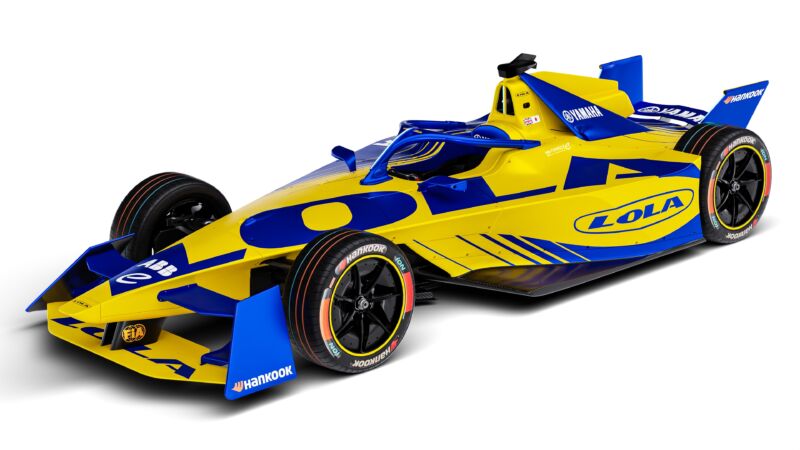
Lola
In 2022, we brought news that Lola, a once-famous racing company, was planning its renaissance. Lola never really cracked Formula 1, but it did have success in IndyCar and sports car racing with cars it designed and built from the 1960s until it ceased trading in 2012. Now, under new ownership, the company has been rebuilding its engineering facilities and expertise. And together with Yamaha as its technical partner, it has chosen Formula E for its official return to professional motorsport.
Formula E’s dart-shaped electric single-seaters are getting a bit of an update before they start season 11 next year. We expect new bodywork, better tires, and perhaps the ability to use the front electric motor to send power to the wheels instead of just acting as regenerative brakes on the front axle, but those components are all spec parts, meaning every team has to use the same ones without modifying them.
That goes for the battery, too, but there is freedom when it comes to the 470 hp (350 kW) electric motor that powers the rear wheels. And then there’s the software, without which the car won’t go anywhere.
“The focus of this project is squarely around technological development in which Lola is fully invested. We see the highly efficient 350 kW electric powertrain that underpins the manufacturer’s perimeter in Formula E as a cornerstone technology with exciting applications across many forms of topflight international motorsport in the coming years,” said Till Bechtolsheimer, Lola’s chairman.
Lola isn’t entirely new to electrification. It was working on an electric sports prototype that managed to set a record or two shorlty after the money ran out. Twelve years is a long time when it comes to EVs, but Lola’s motorsports director is Mark Preston, who in a previous job won back-to-back Formula E championships as team principal of DS Techeetah, and among his teammates are other veterans of that series, as well as F1.
“Lola Cars has a decorated history of success in chassis and aerodynamic design. This project will allow us to create a unique electrified platform with a software focus at its core to provide a basis for Lola’s wider plans in defining the future of motorsport technology,” Preston said.
Although Yamaha has an existing design for a 350 kW electric motor—one supposed to power an electric Subaru that was announced and then never heard from again—the motor for the Formula E powertrain will be built by Helix, with Xtrac supplying the transmission, both to Lola and Yamaha’s specifications. Yamaha and Lola have been working together on the project for more than 18 months now, mostly in simulation.
“Yamaha is keen to learn a lot about the control systems and energy management that Lola brings to the table. Software is a huge element of Formula E, and it’s one of the areas they’re most interested in. We’re working closely and collaborating on all areas of the powertrain,” Preston told Racecar Engineering.
“Yamaha Motor Company is accelerating the research and development of various technologies that contribute to sustainability. As the technical partner, we hope to acquire more advanced energy-management technologies through the highest level of electric racing in Formula E. We also share Lola’s new philosophy of sustainable motorsport, and we are very pleased and honored to form this partnership with them,” said Heiji Maruyama, Yamaha’s managing executive officer and director.
Although Lola is entering the series as an official powertrain manufacturer, it won’t add an extra two cars to the grid. Instead, expect Lola to take up an existing slot on the grid, although Ars understands those negotiations are still ongoing.
In addition to developing an expertise in electrification of motorsport, Lola says it plans to also focus on hydrogen—a fuel that continues to be attractive to the organizers of Le Mans—as well as sustainable fuels and materials.




















+ There are no comments
Add yours